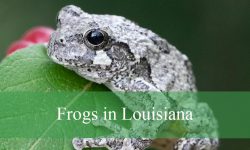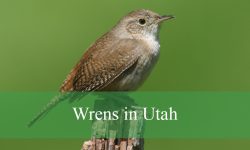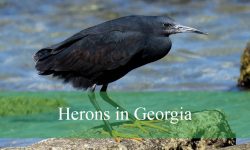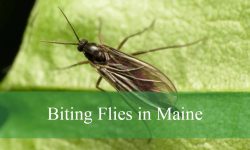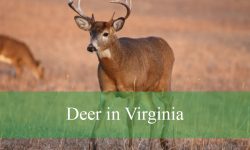Florida’s open skies and warm climate provide the perfect setting for vultures to soar. These large, dark birds are often seen circling overhead or gathering near roadsides and fields, performing their important job as nature’s clean-up crew.
While two vulture species are commonly found across the state, there are also a couple of rarer ones that occasionally make an appearance. Each has distinct features—like head color, wing shape, and flight behavior—that make them easier to tell apart once you know what to look for.
This guide breaks down the four types of vultures that have been seen in Florida. With clear identification tips and photos, it’s easier than ever to spot and appreciate these fascinating birds in any corner of the state.
Commmon Vultures Found in Florida
Turkey Vulture (Cathartes aura)
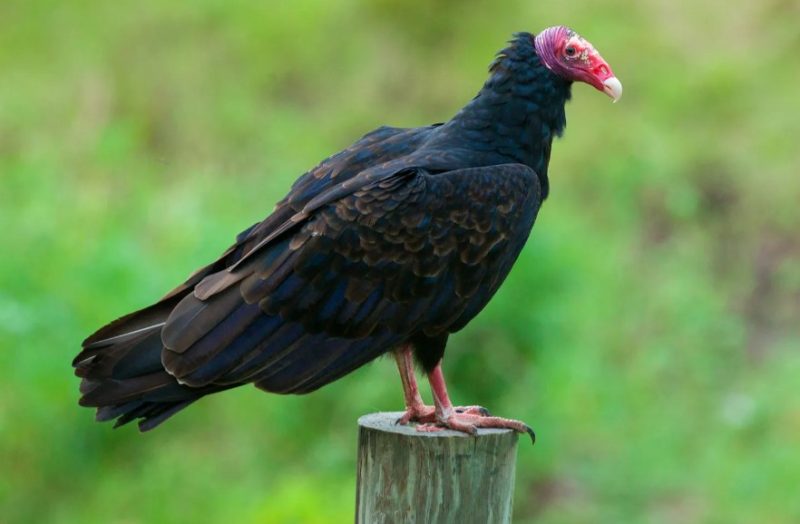
The Turkey Vulture is one of the most widespread and recognizable vultures in Florida. This large bird features a dark brown to black body with a featherless red head and pale bill. Its wings are long and slightly raised in a shallow “V” when in flight. The undersides of its wings are two-toned—darker at the front and lighter at the back—making it easy to identify while soaring overhead.
This species is known for its exceptional sense of smell, which it uses to detect carrion from great distances. Unlike most birds of prey, the Turkey Vulture doesn’t hunt live animals; instead, it feeds exclusively on decaying carcasses, playing a crucial role in Florida’s ecosystem by cleaning up dead wildlife and reducing disease.
Turkey Vultures can be seen year-round across Florida in a wide variety of habitats. They often glide silently over open fields, roadsides, wetlands, and even suburban areas, especially near landfills and farms. They are also frequently seen roosting in groups on power lines, bare trees, or rooftops.
Despite their grim diet, Turkey Vultures are protected under the Migratory Bird Treaty Act, making it illegal to harm them. They are generally shy around humans and are more likely to flee than approach. Their presence is a natural and beneficial part of Florida’s wildlife landscape.
Black Vulture (Coragyps atratus)
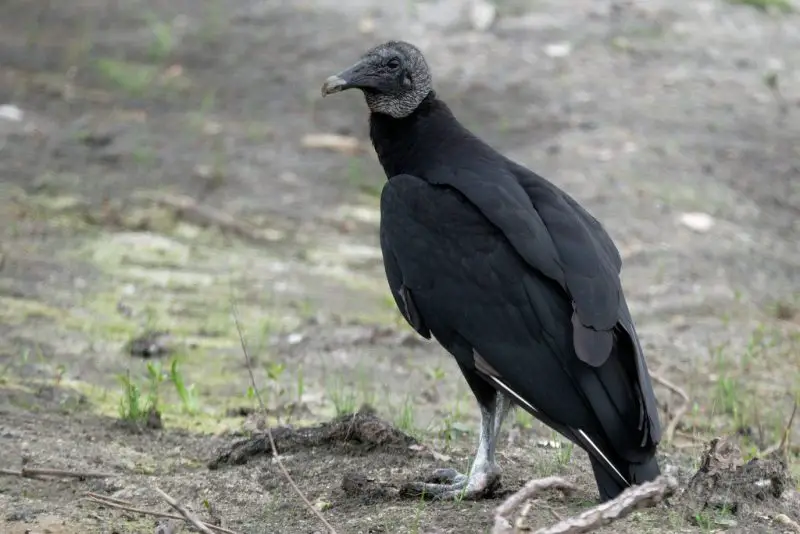
The Black Vulture is slightly smaller than the Turkey Vulture but more stocky in build. It has an all-black body, short square tail, and distinctive silvery-white wingtips that flash when it flies. Its head is also featherless but is black or dark gray instead of red, giving it a more uniform, shadowy appearance.
Unlike Turkey Vultures, Black Vultures lack a highly developed sense of smell. Instead, they often rely on Turkey Vultures to locate food, then follow them to carcasses. Once at a food source, Black Vultures can be aggressive and are known to chase away other scavengers, including their red-headed cousins.
These vultures are also common throughout Florida year-round and are particularly well adapted to human-altered landscapes. They thrive near towns, highways, garbage dumps, and agricultural areas. In urban and suburban environments, they may be seen perched on buildings or vehicles, sometimes causing minor damage with their sharp beaks and claws.
Though helpful in cleaning up carrion, Black Vultures have earned a mixed reputation due to their occasional attacks on weak or newborn livestock. Nevertheless, they are protected by federal law and are an important part of the natural cleanup crew in Florida’s diverse ecosystems.
California Condor (Gymnogyps californianus)
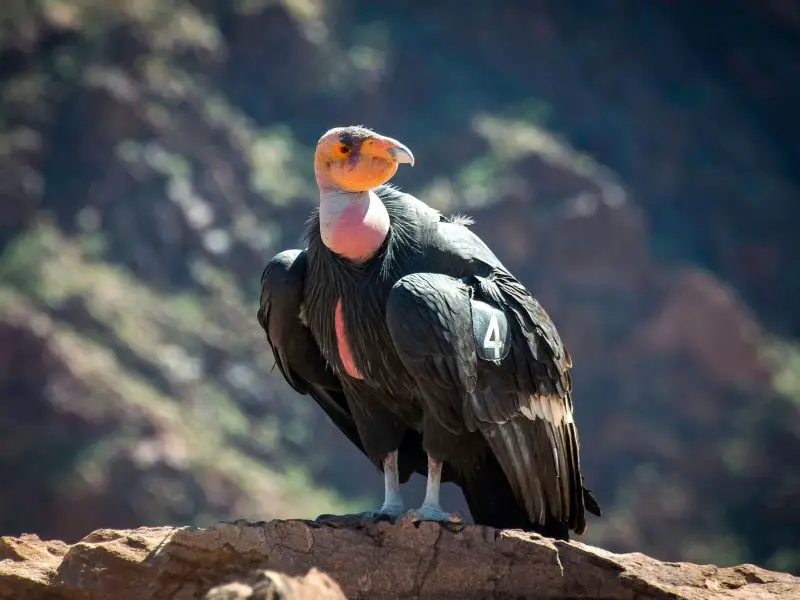
The California Condor is not a regular resident of Florida, but it deserves mention due to its impressive size and occasional misidentification. As one of the rarest birds in North America, it boasts a massive wingspan of up to 10 feet (3 meters), dwarfing all other vultures. Adults have a black body, white patches under the wings, and a bare head that can vary in color from pink to orange depending on age and mood.
Historically, California Condors were found throughout much of the western United States, but by the 1980s, they were extinct in the wild. Through an intensive captive breeding program, small populations were reintroduced to California, Arizona, Utah, and Baja California. Florida is far outside their known range, so any sighting in the state would be extraordinarily rare and likely involves a captive or escaped bird.
California Condors feed exclusively on carrion, often scavenging large animals like deer or livestock. They soar for hours in search of food, using their excellent eyesight rather than smell. Unlike vultures that crowd around a carcass, condors often feed more methodically and are sensitive to disturbance.
While their presence in Florida is nearly nonexistent, confusion can arise when people misidentify large soaring birds. Bald Eagles or very large Turkey Vultures may occasionally be mistaken for condors. Nonetheless, conservation success stories like the condor help raise awareness about the importance of protecting all scavenger species, even the rarest ones.
Lesser Yellow-headed Vulture (Cathartes burrovianus)
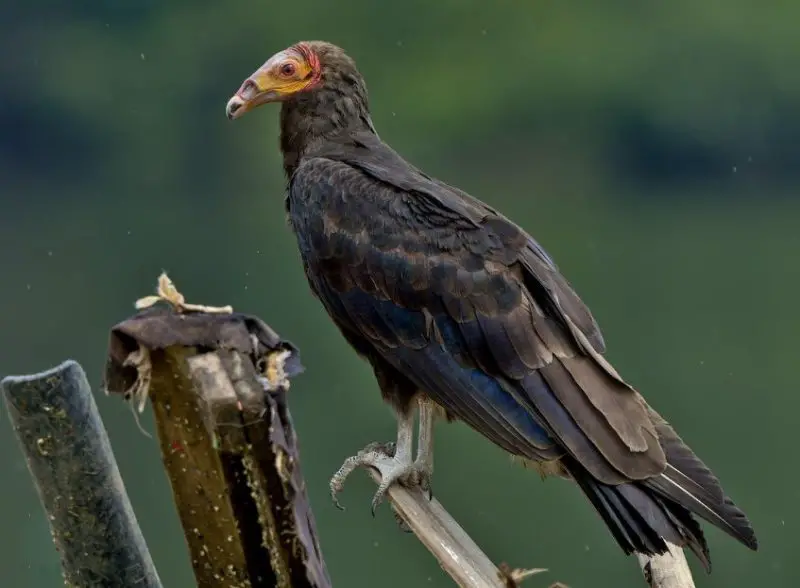
The Lesser Yellow-headed Vulture is a rare visitor to southern Florida, with only a handful of verified sightings. It resembles the Turkey Vulture but is slightly smaller and more slender, with a distinctively pale yellow or orange featherless head. The bird’s plumage is mostly dark with a subtle greenish sheen in good lighting.
This species primarily inhabits lowland tropical wetlands, savannas, and mangroves in Central and South America. However, due to Florida’s proximity to the Caribbean and tropical climate, occasional individuals may stray into the southern Everglades or Florida Keys, especially during storms or strong weather systems.
Like the Turkey Vulture, the Lesser Yellow-headed Vulture has a strong sense of smell and feeds on carrion. It often soars low over open marshlands or flooded areas in search of dead animals. Its behavior and flight style closely mirror that of its red-headed cousin, making identification tricky without a close look.
Although it’s not a regular part of Florida’s avifauna, birdwatchers and ornithologists keep an eye out for this elusive vulture. Verified sightings are extremely rare and are often cause for excitement in the birding community. Any appearance in Florida is considered vagrant and may not recur regularly.
FAQs About Vultures in Florida
What types of vultures live in Florida?
Florida is home to two common species of vultures: the Turkey Vulture (Cathartes aura) and the Black Vulture (Coragyps atratus). These scavengers are found statewide and play a key role in cleaning up dead animals. Rarely, vagrant species like the Lesser Yellow-headed Vulture may be spotted in southern Florida.
How can you tell the difference between a Turkey Vulture and a Black Vulture?
Turkey Vultures have a red featherless head, a slight V-shaped wing posture while soaring, and two-toned wings (light on the back edge). In contrast, Black Vultures have a black or grayish head, broad wings with white wingtips, and a more direct, steady flight with fewer wing tilts.
Do vultures in Florida pose a threat to people or pets?
No, vultures do not typically pose a threat to humans or healthy pets. Turkey Vultures only feed on carrion. However, Black Vultures have been known to occasionally attack weak or newborn livestock, which can cause concern among farmers.
Why are vultures important to Florida’s environment?
Vultures act as nature’s cleanup crew by removing dead animals from the environment. This scavenging behavior helps prevent the spread of disease and reduces waste in natural and urban areas. Without vultures, carcasses would decompose more slowly and attract pests.
Are vultures protected in Florida?
Yes, all vultures in Florida are protected under the Migratory Bird Treaty Act. It is illegal to harm, harass, or kill vultures, or to interfere with their nests. Special permits are required for removal or control in agricultural settings.
Where can I see vultures in Florida?
Vultures are commonly seen soaring in the sky, especially in rural areas, near highways, landfills, wetlands, and farmlands. They often roost in large groups on rooftops, cell towers, trees, or other tall structures.
What should I do if vultures are roosting on my property?
If vultures are gathering on your roof or property, non-lethal deterrents like noise makers, motion-activated sprinklers, or reflective surfaces can help. Since they are federally protected, consult local wildlife agencies before taking any action.
Do vultures migrate in and out of Florida?
Some Turkey Vultures in Florida migrate northward in spring and return in fall, especially those in the northern part of the state. However, many vultures in Florida are year-round residents, particularly in the southern regions.
Can California Condors be seen in Florida?
California Condors are not native to Florida and are extremely rare in the state. Any reported sightings are likely misidentifications or escaped birds from captivity. They are primarily found in the western United States.
What do vultures in Florida eat?
Vultures feed almost exclusively on dead animals (carrion). They use their excellent sense of smell (Turkey Vulture) or keen eyesight (Black Vulture) to locate food. They do not hunt healthy prey or eat vegetation.

